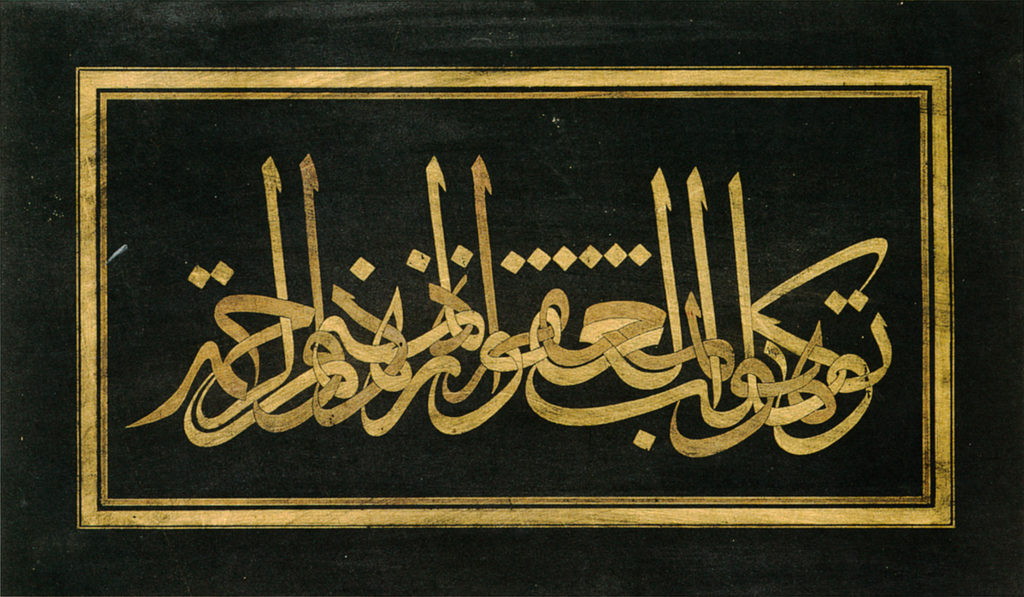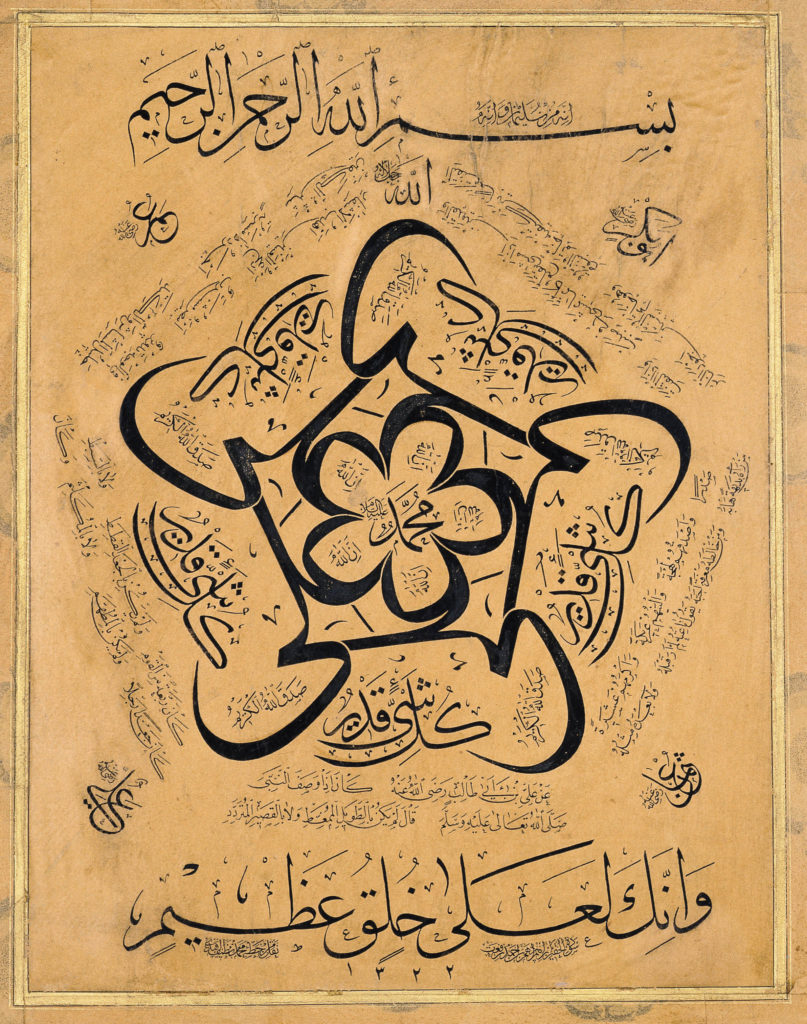Frequently Asked Questions
Below is a list of frequently asked questions about Arabic script calligraphy.
What is Arabic script calligraphy?
Arabic script calligraphy is the art of beautiful writing, using the letters of the Arabic alphabet.
This art form is also known as Islamic calligraphy, because it was first developed to write the Qur’an—the holy book of Islam. Calligraphy is one of the highest forms of visual art in the Islamic world. Today, this art form is practiced and enjoyed by people from many different countries and religions.
Islam has exerted also a more subtle, a more indirect influence on the development of calligraphy: by discouraging the graphic representation of human beings and animals it channeled the creative energies of Muslim artists toward other decorative arts, especially calligraphy.
Al-Baba, Kamel. “Calligraphy: A Noble Art.” Saudi Aramco World, 15:4: 1-7. July/August 1964.
An example of Arabic script calligraphy—beautiful writing.
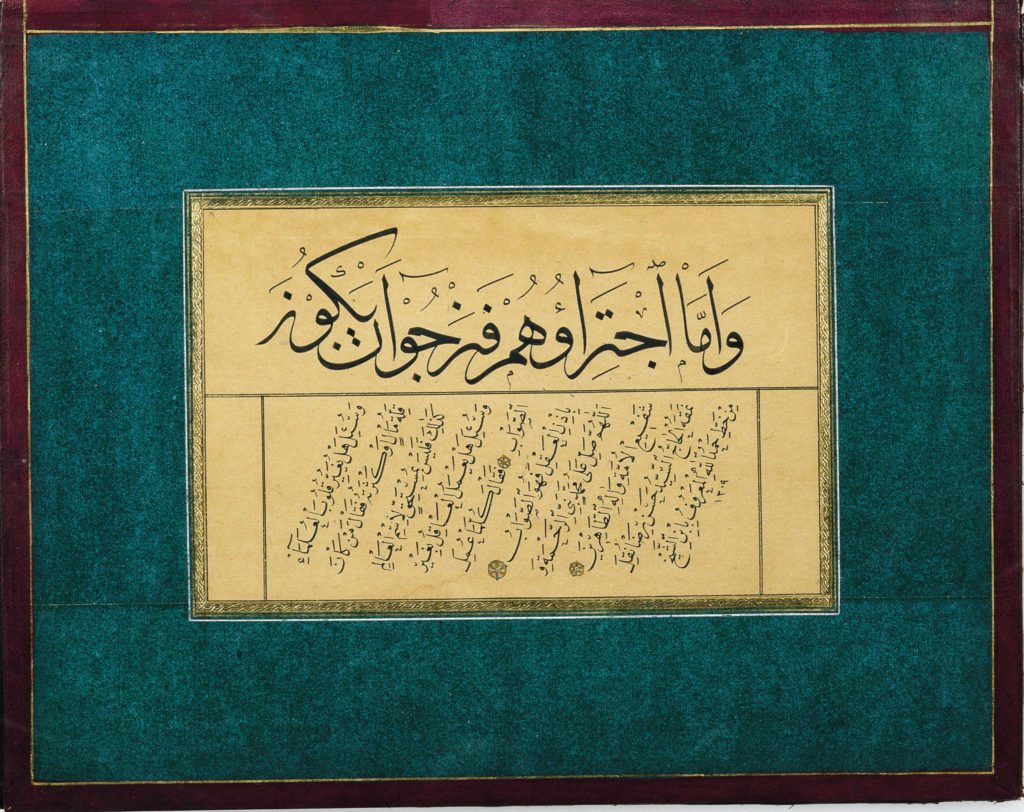
What is the difference between calligraphy and handwriting?
Calligraphy differs from handwriting because its purpose is both aesthetic and functional. Writing’s primary purpose is to communicate—its beauty is irrelevant or secondary. Calligraphy, on the other hand, is practiced for its beauty and its content.
Another key difference between calligraphy and handwriting is the instrument used for writing. Traditionally, Arabic script calligraphy is written with a specially carved reed pen. Everyday writing can be produced with any number of instruments.
The specific rules of calligraphy are stricter than the rules of handwriting. Calligraphy’s rules also change, depending on the script being written. For example, one script may require the use of vowels, while another script may be written without any vowels.
Because of these distinctions, calligraphy has developed cultural, religious and artistic significance beyond that of everyday writing.
Example of calligraphy
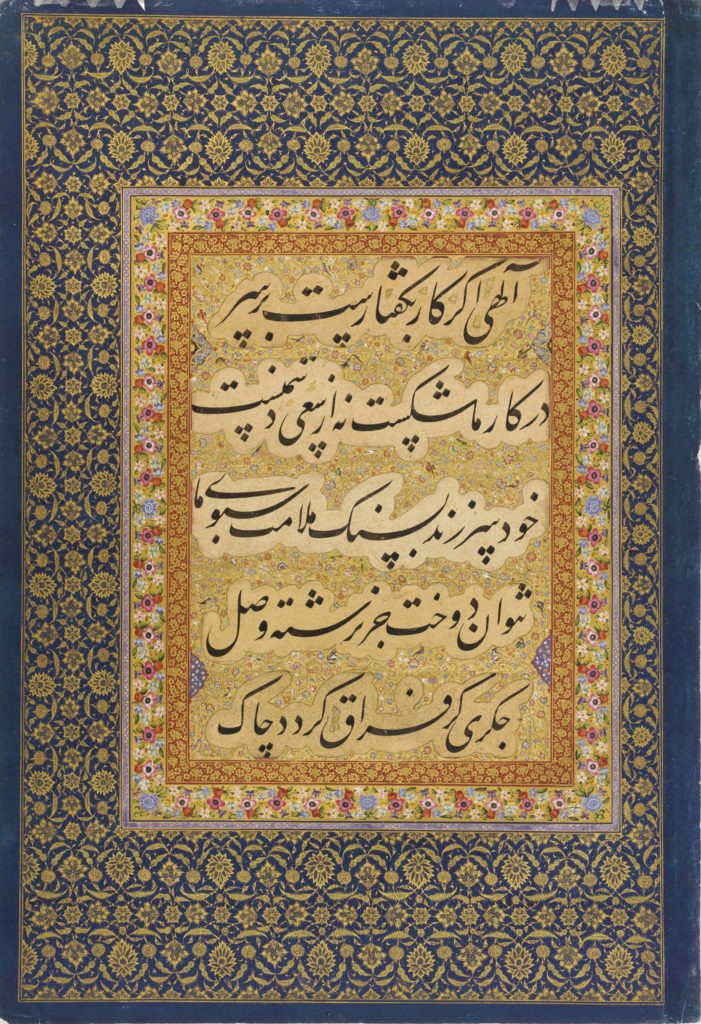
Example of handwriting
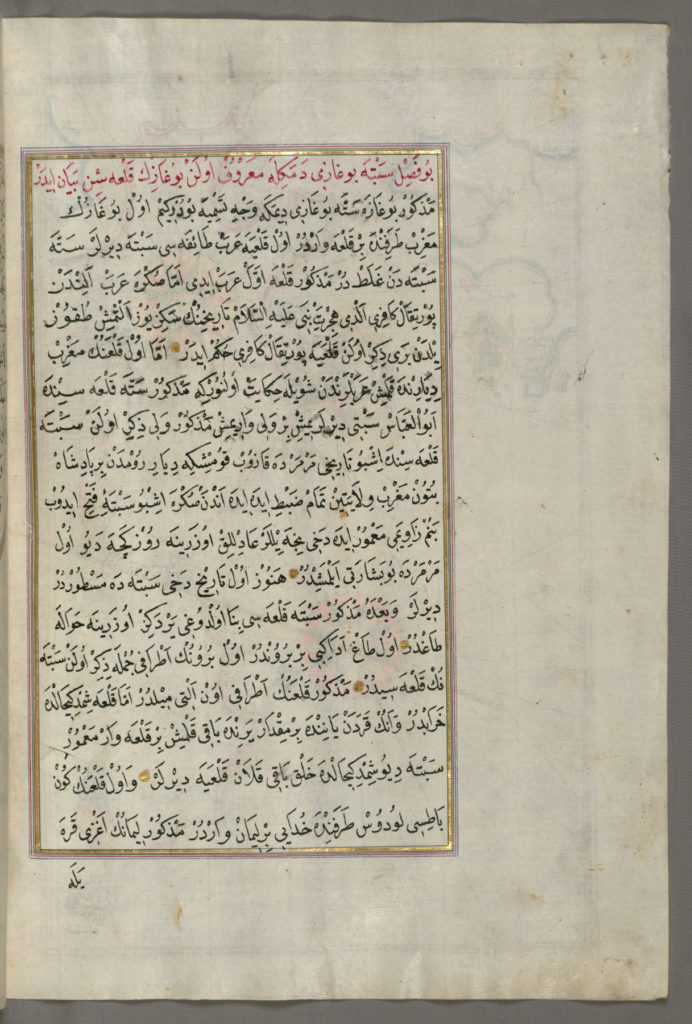
Are there different styles of writing calligraphy?
There are many different styles of Arabic script calligraphy. These developed over centuries into formal scripts. Each script has distinctive shapes and characteristics.
Scripts were created for various purposes. Some were used to write the Qur’an; others were used for court documents. Small scripts were created to send mail by pigeon post; large scripts were developed for architectural inscriptions; and so on.
Different regions developed their own styles. Three regions in particular were important in the development of calligraphy: the Arab world (from Morocco to Iraq), the Ottoman empire (present-day Turkey and beyond), and Persia (present-day Iran and beyond).
Examples of different types of scripts
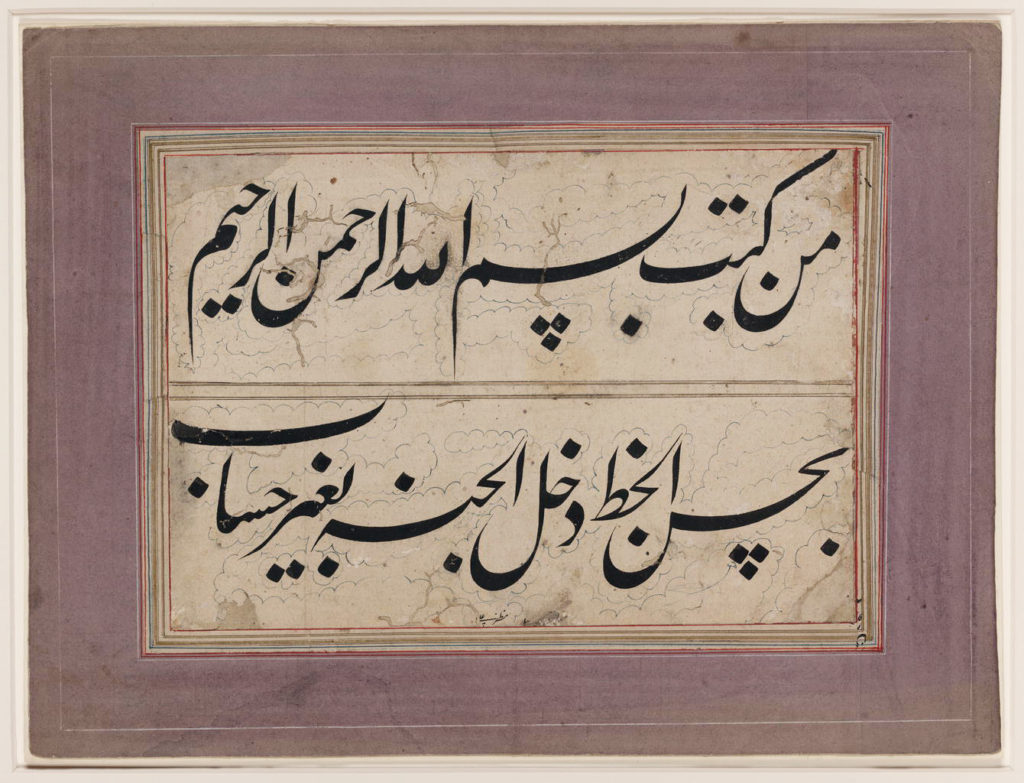
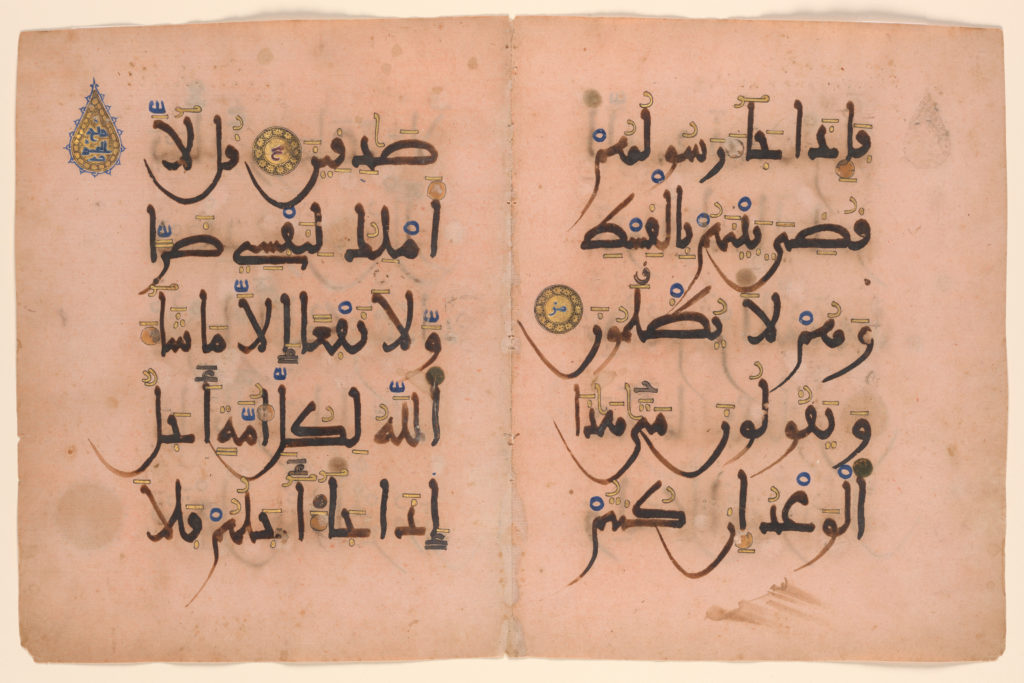
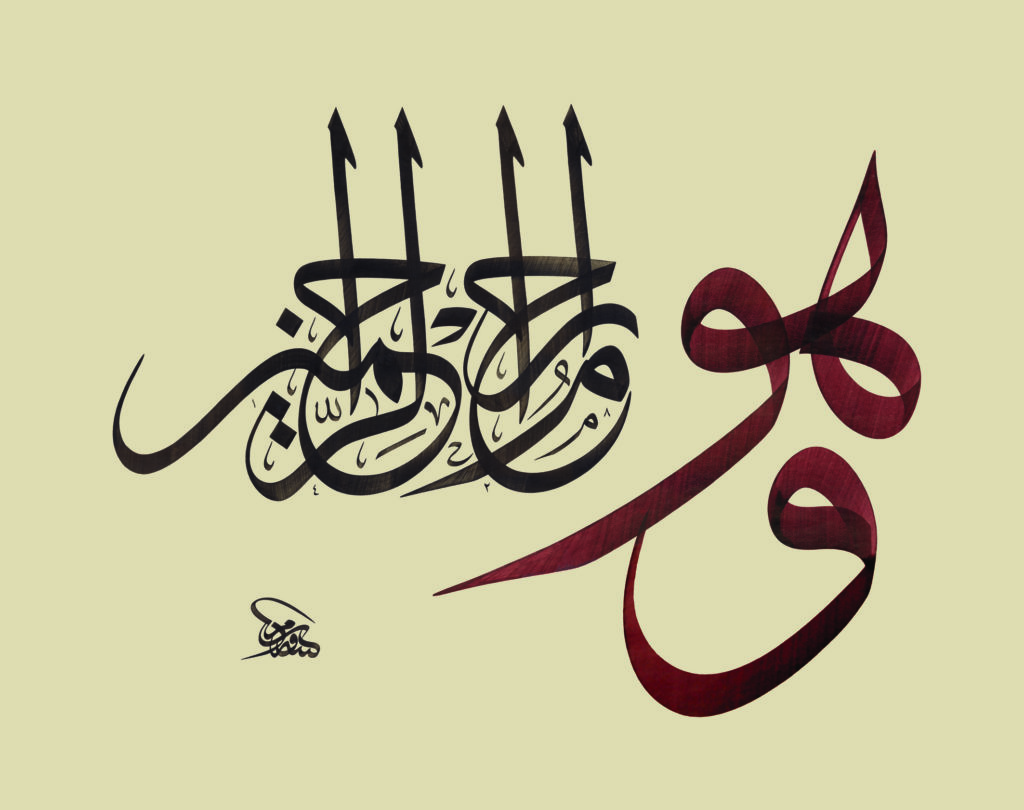
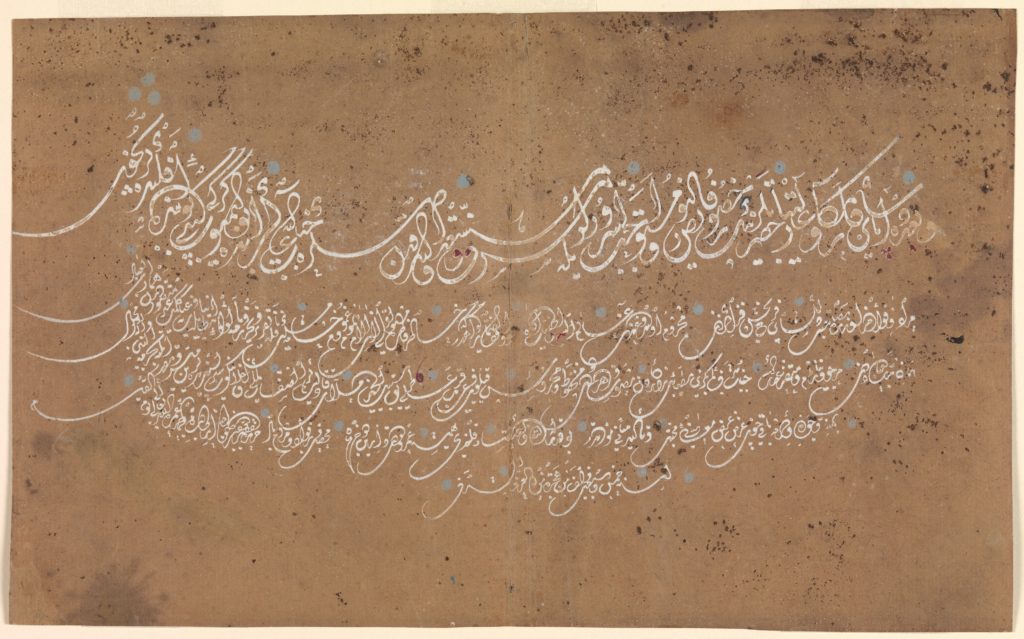
What tools are used to write calligraphy?
Calligraphy is traditionally written with a reed pen. The reed is aged, treated and specially carved to hold ink.
Most calligraphy is written in black ink. When made from soot, dissolved gum arabic and distilled water, this ink does not easily fade.
Calligraphy can be written on many surfaces, including:
- Paper
- Parchment
- Textiles
- Metal
- Ceramic
- Wood
- Stone
- Glass
- Ivory
- Leather
- Buildings
Examples of calligraphy tools
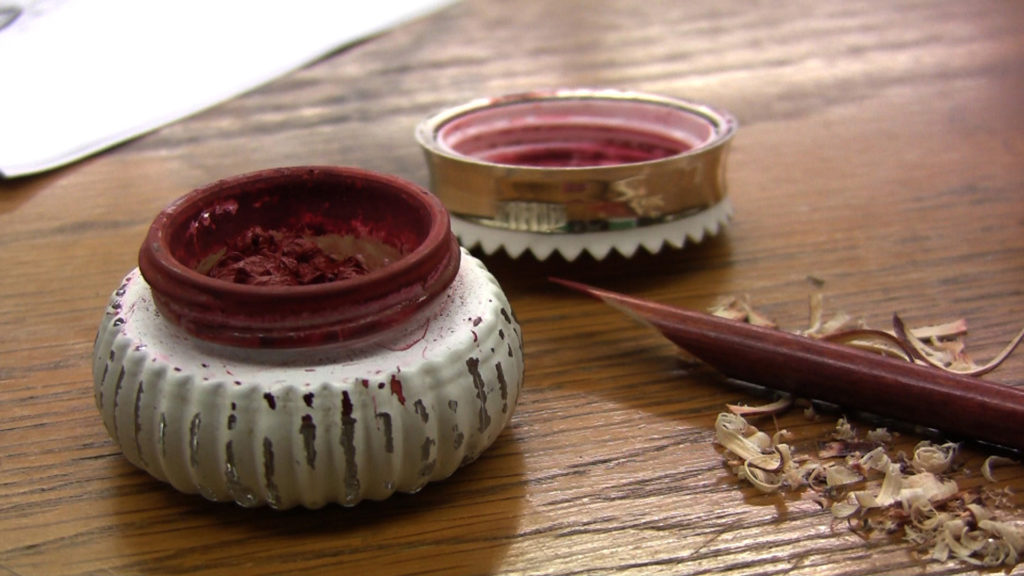
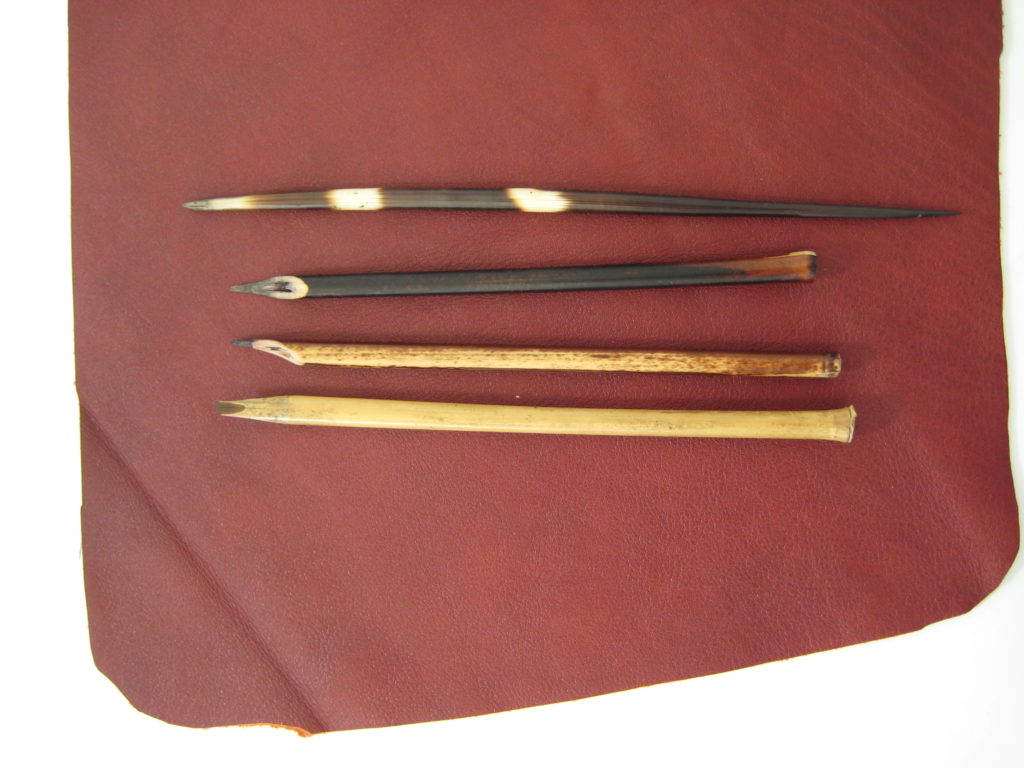
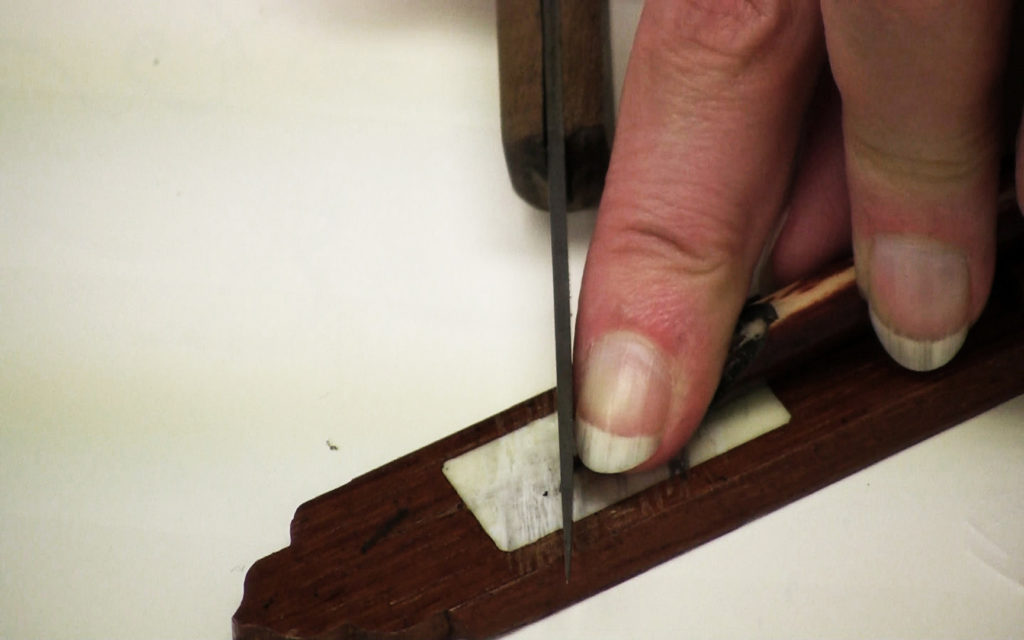
What kinds of things are written in calligraphy?
The content of a calligraphy composition varies greatly, and can include any of the following:
- Qur’anic verses
- Hadith, or sayings about the prophet
- Poetry
- Proverbs
- Royal decrees
- Court documents
- Stories
- Salutations
Calligraphy can be used to write a wide variety of things!
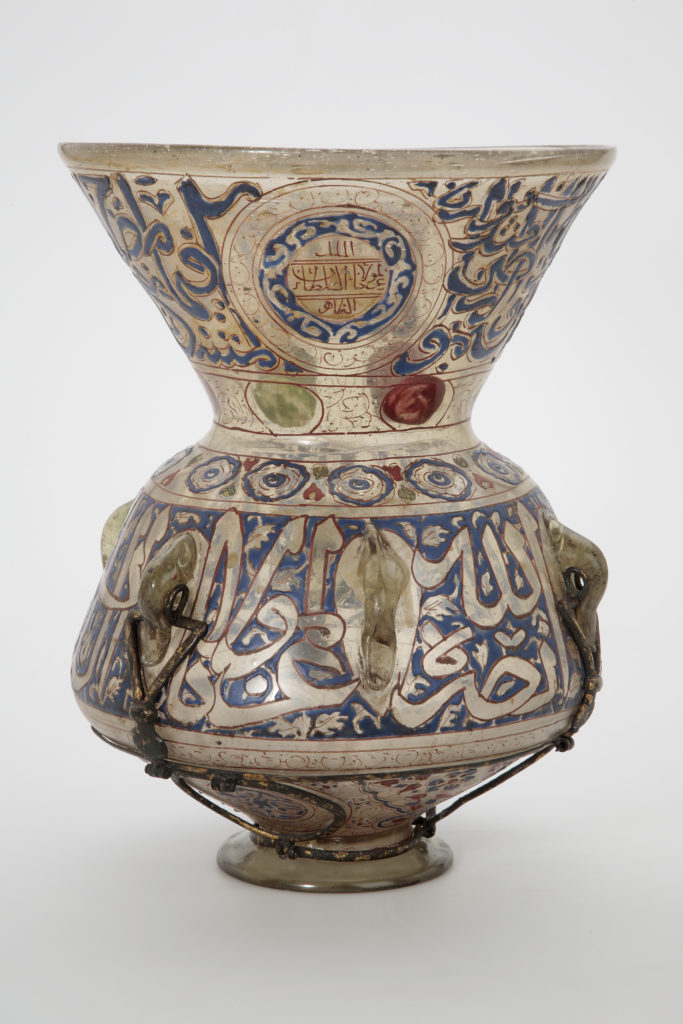
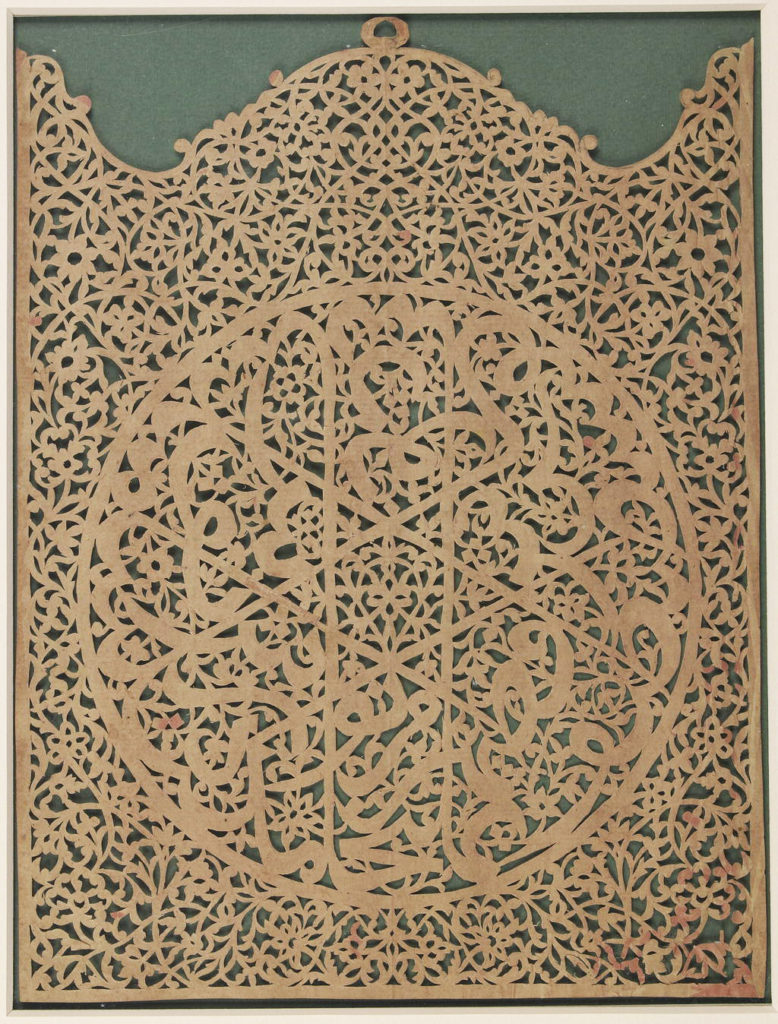
How do I read calligraphy?
Arabic letters are not only beautiful; when arranged into words, they communicate meaning. If you are able to read the Arabic script, you should be able to read calligraphy. All it takes is a little time and practice.
Letters in a calligraphy composition are often interwoven, making them more challenging to read than printed Arabic. The Arabic fonts used for printing are often based on the Naskh script. Arabic script calligraphy, on the other hand, employs a number of different scripts. The best way to begin reading calligraphy is by familiarizing yourself with how the letter shapes appear in each of the different scripts.
Here are a few other tips:
- Arabic is read from right to left.
- If the letters of a composition are interwoven, there may not be a clear horizon line (the invisible horizontal line upon which letters sit). Sequential letters might be placed above or below each other, making words difficult to read. The best way to decipher this type of composition is by trying to recognize whole words.
- If a composition is circular or teardrop-shaped, start reading in the lower right-hand corner. Lines in this type of composition are stacked vertically. Start in the lower-right hand corner and read from right to left, working your way up the page. (A few circular or teardrop-shaped compositions start at the top, but this pattern is rare).
- Look for a key word. Certain phrases are repeated over and over again in calligraphy. Often if you can read the first few letters, the rest of the phrase becomes apparent. An example of a phrase that is commonly written is the bismillah, an Islamic phrase used when embarking on significant endeavors, meaning, “In the name of God, most gracious, most compassionate.” Often a few letters or words are all that is needed to decipher these well-known passages or sayings.
- Be patient. Sometimes it takes years to be able to decipher a composition. Meanwhile, you can enjoy its aesthetic beauty. A certain amount of ambiguity is part of the delight of this art form.
There are many types of calligraphy compositions.
